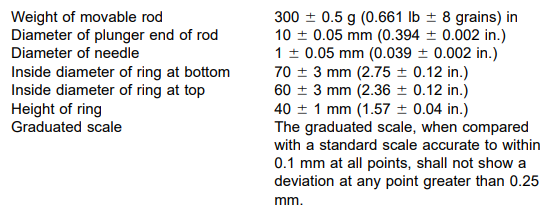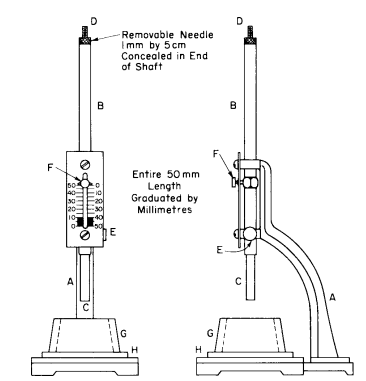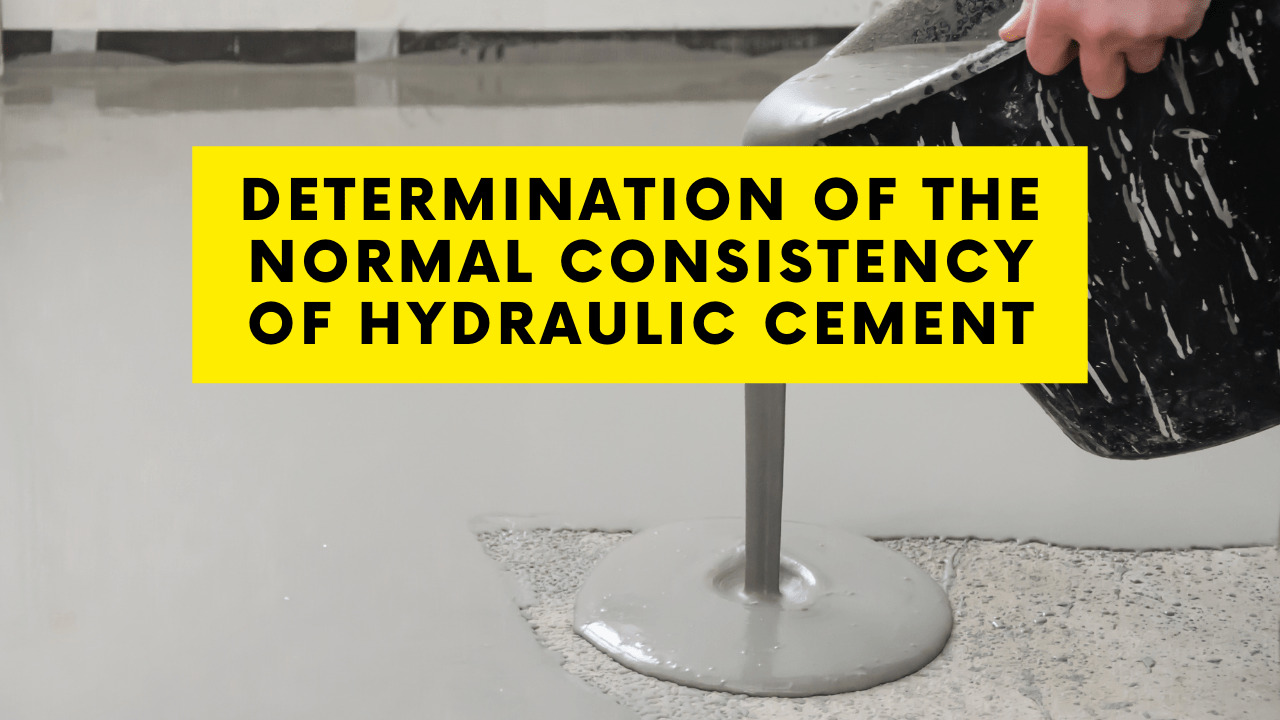Table of Contents
Standard Used
ASTM C-187
Objective
The performance of this test aims at the following objectives:
- To precisely determine the quantity of water required for achieving the normal consistency of cement paste
- To kick start the performance of other lab tests that include the determination of initial and final setting time of cement and soundness test on cement.
Related Theory
Consistency:
The word consistency simply means viscosity or thickness of something. In order to make a paste out of cement, water is to be added. The thickness of the consequent paste is termed its consistency.
It is apparent that the viscosity of cement paste is contingent on the amount of water added. Greater is the quantity added, less viscous is the paste, and hence, lesser is its consistency.
The addition of a little amount of water to the powdered cement will not help it act as gel or binder, and the addition of water in profusion will decrement the viscosity of cement to an extent that will result in segregation of concrete.
Hence, it is quintessential to add a water proportion that results in an appropriate consistency of cement and the standard has defined a normally consistent cement for the cause.


Standard or Normal Consistency:
The standard or normal consistency of cement is obtained when tested in the laboratory in a VICAT apparatus through the free-falling of a plunger. As per the standard definition, the amount of water that results in a free-fall penetration of plunger into the cement paste by 10mm is likely to produce a paste of standard consistency.
However, the process can be a little tedious since it requires adding trial quantities of water to the powdered cement and checking for the subsequent plunger penetrations.
Apparatus
- Weighing balance, to weigh cement and water
- VICAT Apparatus, comprising a plunger and conical ring mold, supported on a glass plate at the bottom. The assembly consists of a frame with a movable rod, fixed in a particular position using screws. The graduated scale attached to the frame gives the amount by which the plunger end is lowered. The plunger is of 10mm diameter and 50mm length. The tapered conical ring is non-absorptive and non-corroding with an inside diameter of 70mm at the base and 60mm at the top, and a height of 40mm. In addition, the ASTM standard has given precise values of the above dimensions of test assembly with possible or acceptable variations as given below:

- Non-absorptive square glass plate measuring 10cm by 10cm, to hold the conical mold containing cement paste
- Graduated cylinders, for adding a measured quantity of water to the cement
- Scarper, to thoroughly mix water and cement
- Trowel, to level off the mold top once it is filled with the cement paste


Fig.: VICAT apparatus test setup

Fig.: Placement of cement paste in the mold
Test Procedure
Test Requisites
- Temperature: The test must be carried out in an environment where the temperature ranges between 20 and 27.5°C. Additionally, the mixing water should precisely have a temperature of 23°C with a permissible variation of ±2°C.
- Humidity: The standard implies that the relative humidity of the test environment shall not be less than 50%.
- Quantity of Cement: The ASTM standard specifies that the cement quantity to be taken for the test should preferably be 650gm. However, this is not a strict requirement to follow suit.
Test Specifications
- Mixing Duration: The mixing and placing of cement paste in the mold should be carried out with 4±1/4 min. from the instant cement and water come in contact with each other.
Test Procedure
- Check for the conformance of temperature and humidity with the standard’s guidelines.
- Take a measured quantity of powdered cement and record its weight as M1.
- Add a weighed amount of water (M2) to the cement and thoroughly mix to make a paste out of it.
- Take an ample quantity of the cement paste in your hands and make a ball out of it. Toss the cement ball between two hands, spaced approximately 150mm from each other, six times. This results in a nearly spherical ball of cement paste that is ready to go into the ring.
- Carefully press the ball into the larger diametric end of the conical ring and fill it with the paste.
- Remove the excess paste with a trowel by leveling the top of the mold.
- Place the mold on the glass plate on a leveled surface such that the center of the ring just comes under the center of the plunger.
- Set the pointer to zero reading or record the initial reading on the scale.
- Release the plunger into the cement paste by rotating the release pin. The plunger begins to lower into the paste.
- Record the penetration achieved by the plunger after 30 seconds of its release by noting the value on the graduated scale.
- Repeat the above procedure by taking variable quantities of water as some percentage of cement and recording the plunger penetration in each case.
- The water percentage that yields a plunger penetration of 10mm is termed as the normal or standard consistency of cement and is reported so.
Observations and Calculations
Type of Cement:
Manufacturer of Cement:
Quantity of cement taken for the test = M1 (gm) =
| Trial No. | Amount of Water Added (M2)
(gm) |
Penetration of Plunger
(mm) |
% Water by Weight
= (M2 / M1) *100 |
| 1. | |||
| 2. | |||
| 3. |
Results
Percentage of water required for normal consistency of cement =
Precautions
- While carrying out the mixing, tossing, and placing operations, record the time taken and ensure its conformance with the test specifications.
- Care should be exercised so as to not compress the paste while leveling it off and smoothing using the trowel.
- The plunger should be released within 30 seconds post completion of mixing.
- The test setup should be free from any external vibrations that may otherwise aid in the penetration of the plunger.
- Each trial is to be made using fresh cement, instead of tampering with the already used cement paste.
Discussion
- The addition of water in excess of that required for standard consistency will result in a strength decrement which in no case is desirable. In the case of concrete, the consistency is governed by the water-to-cement ratio that classifies the workability of wet concrete.
- Using finer cements increases the amount of water required for a particular consistency. This is because finer particles have larger surface areas and the probability of greater hydration prevails.
- On-field practices of making cement pastes with a particular cement type and source will certainly not yield the exact laboratory results. This is because the environmental conditions on the site cannot be tampered with. However, the laboratory tests serve as a tentative guideline for the site proceedings.





